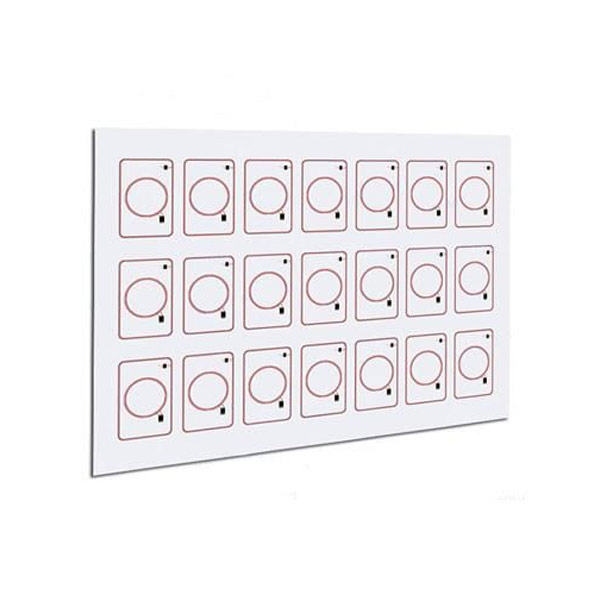CPU card is a kind of ic card is a real sense of smart card. the integrated circuit in the card has a microprocessor CPU, storage unit (including random memory RAM, program memory ROM (FLASH), user data memory EEPROM) and chip operating system COS.
CPU card-CPU card overview-CPU card specific technical information
cpu card CPU card
Due to the lack of mastering the key production process, the CPU card chips originally designed in China have been produced abroad. At present, the capacity of CPU card designed and manufactured independently in China reaches 128K. CPU card can be applied to finance, insurance, traffic police, government industry and other fields. With the characteristics of large user space, fast reading speed, and support for multiple uses of one card, it has been certified by the Peoples Bank of China and the National Business Secretary Committee.
To understand what is CPU card, we must start from IC card.
IC card is an integrated circuit card (integrated Circuit card) is short for plastic card inlaid with integrated circuit chip, its shape and size in line with international standards (ISO). the chip generally uses non-volatile memory (ROM, EEPROM), a microprocessor to protect the logic circuit and even the CPU.
An IC card with a CPU is a true smart card. According to the form of embedded IC chip and chip type IC cards can be broadly classified into contact, contactless and dual interface cards.
Classification of CPU cards
Non-encrypted memory card: the IC chip inside the card is mainly EEPROM, which has data storage function but no data processing function and hardware encryption function.
Logic encryption memory card: the encryption logic circuit is added to the non-encryption memory card. the encryption logic circuitry protects the data in the card from being open to external access by verifying a password, but it is only a low level of security protection and cannot prevent malicious attacks.
Standardization of CPU cards
As the worlds economies are moving toward internationalization and the establishment of a global financial services system, the issue of card interoperability has been brought up. the same card is used in different countries and environments. To solve this problem, it is necessary to develop a series of international standards , so that manufacturers of CPU cards and their interface devices manufacture products with uniform interface specifications in accordance with a unified standard to ensure that different countries and industries use a unified product CPU card software and hardware technical specifications to develop application systems Samples can be produced by different manufacturers of CPU cards and interface devices for exchange and sharing.
Technical standards for CPU cards
Since 1987, the international Organization for Standardization has been developing and promulgating international standards for CPU cards CPU cards themselves are
● ISO 10536 identification card - contactless integrated circuit card
● ISO 7816 identification card - integrated circuit card with contacts
● ISO7816-1 specifies the physical characteristics of the card. the physical characteristics of the card describe the ability to protect against ultraviolet light, the dose of X-ray, the mechanical strength of the card and contacts, and the ability to resist electromagnetic interference.
● ISO7816-2 specifies the size and location of the card.
ISO7816-3 specifies the electrical signal and transmission protocol of the card . the transmission protocol includes two kinds: synchronous transmission protocol and asynchronous transmission protocol.
ISO7816-4 specifies the card inter-industry exchange command. including the command and response information sent in the card and read-write room; the file in the card Data structure of the file, data access rights and security structure. the basic features of the CPU card.
● Compliant with ISO 14443 TypeA and ISO dual interface 7816 interface CPU card
● Hardware DES3DES coprocessor
● Hardware RSA coprocessor
● Hardware SM1 coprocessor
● Hardware random number generator
CPU card functional requirements.
● Support for PBOC2.0 debit credit application
● Support PBOC2.0 loan record-based micro-payment applications
● Support for PBOC2.0 contactless IC card payment applications (i.e. QPBOC)
● Support PBOC2.0 application e-purse
● Support DDACDA authentication [1]
CPU card application standard for financial sector
Chinas financial integrated circuit (IC) in March 1998, the Peoples Bank of China and nearly a dozen financial units using international standards and advanced foreign technology ISO standards and Europay, Mastercard, Visa developed three organizations EMV based on 96, combined with the actual needs of domestic CPU to Chinas financial and application card CPU specifies the basic application of the card.
● ISO 992 financial transaction card - integrated circuit card and the information between the card recipient device
● ISO 14443: Identification card - Non-contact card specification (distance 10) cm)
● ISO 10202 financial transaction cards - Security structure of integrated circuit card financial transaction systems
● EMV: integrated circuit card specification and integrated circuit card terminal specification for payment systems
ISO compared with other organizations, standards and specifications CPU can consult the relevant standards as needed.
CPU card operating system COS
the full name of COS is Chip Operating System, and it is usually developed around the characteristics of the smart card it serves. COS is largely different from the operating systems we normally see on microcomputers (e.g., DOS, UNIX, etc.) due to the inevitable performance and memory capacity of the microprocessor chip inside the smart card.
Features of COS
First of all, COS is a special system, not a general system. That is to say: a COS in general, it can only be applied to specific (or certain) smart cards in different cards COS is generally different. cos is generally designed and developed according to the characteristics of smart cards and their range of applications, although most of the actual functions may follow the same international standards.
Secondly, COS is essentially closer to a monitoring program than to an operating system on an ordinary microcomputer, at least for the time being, rather than to a so-called real operating system. This is because at this stage, the main problem COS needs to solve is how to handle and respond to external commands, which usually does not involve shared and concurrent management and processing. in addition, concurrency and sharing are really not needed for the current smart card applications.
COS fundamentals and key functions
COS is designed in such a way that the memory partitions within the smart card are generally tightly integrated and conform to some of the functions specified in the international standard (ISO IEC design and development 7816 series of standards. However, due to the current rapid development of smart cards and the relatively long development cycle of international standards, the current international standards for smart cards are not perfect. therefore, many manufacturers have developed their own COS to do some extensions. No company has yet. cos products can form an industrial standard. therefore, here will be mainly combined with the existing international standards (referring to the pre-1994) COS with its basic principles and functions as an example, as appropriate, to list its implementation in certain products.
the main functions of COS are to control the exchange of information between the smart card and the outside world, to manage the memory in the smart card, and to perform various commands within the card. Among them, the exchange of information with the outside world is the most basic requirement of COS. in the exchange process, COS currently, the information exchange protocols followed include the two-character transmission T=0 protocol and the asynchronous packet transmission T=l protocol. the specific content and implementation mechanism of these two information exchange protocols are ISOIEC 7816-3 and ISOIEC 7816-3A three are standard provisions; the basic functions of COS management and control are ISOIEC provisions 7816-4 standard. in the international standard, the smart card is also so Data structure as well as COS basic command set for more detailed description. As for ISOIEC 7816-1 and 2 specifies the physical parameters of smart cards and shape and size COS relationship is not very close.

CPU card production process
the whole process from manufacturing to destruction is called life cycle. the life cycle of IC card can be generally divided into.
1. Chip manufacturing: the IC card chip manufacturer neatly arranges the circuits on the silicon wafer through a specific manufacturing process.
2. Module packaging: Many chips are installed on a printed circuit board with 8 contact points in the manufacturing.
3. card manufacturing hides the card control system such as card operating system in the module.
4. card packaging: Mask module is embedded in the plastic substrate.
5. card initialization: Set the basic parameters of the card.
6. installation of issuance key: the issuance sheet will be
7. card personalization create application file and write basic information of cardholder.
8. card application cardholder uses the card to complete various card functions. card application cardholders use the card to complete various card functions.
IC card can be divided into contact card, non-contact card, composite card, can be divided into non-encrypted memory card, encrypted memory card and device technology CP





